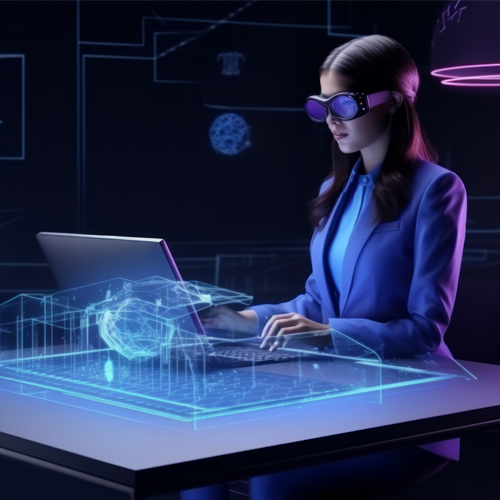As we step into 2025, the landscape of artificial intelligence (AI) and software development is undergoing a profound transformation. With rapid advancements in technology, businesses are adapting to new methodologies and tools that enhance efficiency, security, and user experience. This blog delves into the latest trends shaping these fields, providing insights that can help organizations stay competitive in an increasingly digital world.
1. Generative AI: Revolutionizing Software Development
Generative AI has emerged as a game-changer in software development. This technology enables developers to automate various coding tasks, significantly reducing the time and effort required to produce high-quality software. Tools like ChatGPT and GitHub Copilot are leading the charge, allowing developers to generate code snippets, debug existing code, and even create entire applications based on simple user instructions.
Key Benefits:
Increased Efficiency: Automating repetitive tasks allows developers to focus on more complex problems.
Enhanced Creativity: Generative AI can suggest innovative solutions and design patterns that developers might not have considered.
Reduced Errors: By automating code generation, the likelihood of human error is minimized, leading to higher quality software.
As organizations increasingly adopt generative AI tools, they will see improved productivity and faster time-to-market for their applications.
2. The Shift Towards Low-Code/No-Code Platforms
The rise of low-code and no-code platforms is democratizing software development. These platforms enable users with little to no programming experience to create applications through visual interfaces and pre-built components. As a result, businesses can accelerate their development processes and empower non-developers to contribute to application creation.
Advantages:
Faster Development Cycles: Teams can quickly prototype and deploy applications without extensive coding.
Cost-Effective Solutions: Reduces the need for large development teams, lowering overall project costs.
Increased Collaboration: Encourages collaboration between IT and business units, fostering innovation.
This trend is particularly beneficial for organizations looking to adapt quickly to changing market demands while minimizing resource expenditure.
3. Edge Computing: Enhancing Real-Time Data Processing
Edge computing is becoming increasingly relevant as businesses seek to process data closer to its source. By moving computation away from centralized data centers and closer to edge devices, organizations can achieve lower latency, improved performance, and enhanced security.
Impact on Software Development:
Real-Time Analytics: Applications can process data in real-time, enabling immediate decision-making.
Improved User Experience: Faster response times lead to better user interactions with applications.
Enhanced Security: By keeping sensitive data closer to its source, organizations can mitigate risks associated with data breaches.
As edge computing continues to evolve, it will play a crucial role in the development of IoT applications and real-time analytics solutions.
4. Quantum Computing: A New Frontier
Although still in its infancy, quantum computing is poised to revolutionize software development by enabling unprecedented computational power. Developers are beginning to explore algorithms specifically designed for quantum environments, which could lead to breakthroughs in various fields such as cryptography, pharmaceuticals, and materials science.
Potential Applications:
Complex Problem Solving: Quantum computers can tackle problems that are currently infeasible for classical computers.
Enhanced Security Protocols: Quantum-safe encryption methods are being developed to protect data from future quantum attacks.
Innovative Algorithms: New algorithms leveraging quantum mechanics could transform industries by optimizing processes at scale.
As research progresses, quantum computing will likely become an integral part of software development strategies for forward-thinking organizations.
5. Ethical AI: Balancing Innovation with Responsibility
With the rapid advancement of AI technologies comes the responsibility to ensure ethical practices in their development and deployment. Organizations are increasingly focusing on ethical AI principles that prioritize transparency, fairness, and accountability.
Key Considerations:
Bias Mitigation: Efforts are being made to identify and reduce biases in AI algorithms that could lead to unfair treatment of individuals or groups.
Transparency: Organizations are striving for greater transparency in how AI models make decisions, fostering trust among users.
Regulatory Compliance: Adhering to evolving regulations surrounding AI usage is becoming essential for businesses.
By prioritizing ethical considerations in AI development, organizations can build trust with their users while harnessing the power of these technologies responsibly.
Conclusion
The trends shaping AI and software development in 2025 reflect a dynamic interplay between innovation and responsibility. From generative AI transforming coding practices to ethical considerations guiding AI deployment, businesses must stay informed about these developments to remain competitive. By embracing these trends—such as low-code platforms, edge computing advancements, quantum computing potential, and ethical AI practices—organizations can position themselves at the forefront of technological progress, ensuring they meet the demands of an ever-evolving digital landscape.
Incorporating these insights into your strategic planning will not only enhance operational efficiency but also foster innovation that drives sustainable growth in the years ahead.


